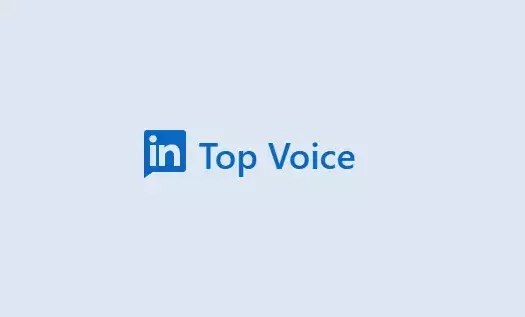In an era dominated by the quest for online authenticity and meaningful engagement, LinkedIn is refining its “Top Voice” badge program, a recognition system designed to spotlight members who actively contribute to the platform’s professional dialogue. After identifying issues with its previous gold badge system—linked to the now-defunct Collaborative Articles—LinkedIn is shifting to a more stringent evaluation process. This change not only aims to preserve the integrity of the badge but also encourages members to engage meaningfully with the LinkedIn community.
Historically, LinkedIn’s blue “Top Voice” badges were awarded indefinitely, creating a landscape where some voices could remain static while the quality of engagement varied. Going forward, members who receive the Top Voice badge will only hold it for a six-month term, subject to review based on continued participation and contribution quality. This shift illustrates LinkedIn’s commitment to maintaining a dynamic and vibrant professional environment, ensuring that only those who contribute effectively can retain their status.
The new protocol stipulates a semi-annual assessment where editors will evaluate the consistency and quality of contributions. According to LinkedIn, members can renew their badges as long as they consistently meet the core program requirements. This proactive approach is likely to push users to be more involved, demonstrating their commitment to creating content that not only engages but also informs and enriches the professional community.
Required Standards for Top Voices
To qualify for a Top Voice badge, users must adhere to specific expectations. These involve generating consistent content, contributing original insights on relevant professional topics, and maintaining a profile that aligns with LinkedIn’s Professional Community Policies. This rigorous adherence to standards serves two purposes: it cultivates a space for authentic interaction and helps users to establish genuine expertise within their fields.
Furthermore, these requirements echo a need for quality over quantity, an essential focus for a platform designed to foster professional growth and networking. The inclusion of criteria such as “high-quality contributions” and “authenticity in voice” reflects the changing dynamics of digital communication, where users are increasingly discerning about the sources of information they engage with.
LinkedIn’s previous attempt at creating a more democratized system through gold “Top Voices” badges became problematic, as it relied heavily on user contributions to Collaborative Articles. These articles, driven by AI-generated queries, inadvertently encouraged participation from individuals lacking relevant expertise. The resultant dilution of quality prompted necessary intervention, leading to the cancellation of the gold badge initiative.
The decision to prioritize badges assessed by LinkedIn’s editorial team rather than an automated system is a step in the right direction. This human element not only adds a layer of trust to the badge issuance process but also echoes the challenges faced by platforms attempting to balance broad user engagement with the necessity of maintaining quality standards.
While the updated criteria may undoubtedly elevate the standard of contributions seen on LinkedIn, they also pose a potential hurdle for users aspiring for recognition. Achieving a Top Voice badge is no longer merely a matter of participation; it requires a strategic commitment to producing valuable content. For many users, especially those new to the platform or less experienced in content creation, the journey might seem daunting.
In a way, this evolution mirrors the historical verification processes of other social media platforms, where a direct human assessment leads to a more prestigious form of acknowledgment. This change could lead to an increase in meaningful discussions and knowledgeable exchanges among members, fostering a culture where expertise is earned rather than bestowed.
LinkedIn’s revision of the Top Voice badge program is a thoughtful approach geared toward fostering a community rich in genuine professional discourse. By implementing a selective and continuous review process, the platform reinforces its commitment to quality, expertise, and active engagement. While some may find the new requirements challenging, those willing to invest time and effort in creating authentic contributions will find that the value of recognition is far more rewarding than any quick fix. In a world inundated with superficial rankings and accolades, LinkedIn is paving a path to meaningful acknowledgment based on merit and authentic professional discourse.

